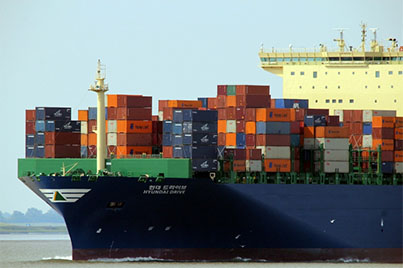Incoterms® 2020 – Explaining the Changes

Understanding the most current Incoterms® rules enables businesses involved in negotiating trade terms, both domestically and internationally, to ensure they know their obligations regarding risk and costs. It will also make clear the responsibilities of both parties for arranging transport and customs formalities. When the sales contract is negotiated and drafted between seller and buyer under Incoterms® 2020 rules, there is much less chance of a dispute and potential legal complications.
The ICC Incoterms® rules have been updated this year to reflect the evolution of international trade and I have spent some time understanding the changes between the new Incoterms® 2020 and the previous version. The key areas taken into account in the 2020 version are…
- Increases in security of the movement of goods
- Flexibility in the Insurance Policy Cargo Marine Clauses depending on the nature of goods and transport
- The on-board bill of lading requirement from banks in certain situations under the FCA rule
Upon opening the new book, I found it a lot easier to use and the presentation of the rules a lot clearer. The ICC have applied a logic to the new rules - they have, for the first time introduced a ‘horizontal’ presentation which groups all ‘like’ articles together across the 11 Incoterms® rules. They have also provided an expanded introduction and explanatory notes.
What are the key changes?
The following points explain the key areas of change between Incoterms®2010 and Incoterms®2020 rules...
- The new rules have been published in a new order, giving greater prominence to delivery and the transfer of risk. The ICC have found when speaking to industry that businesses are looking at this area first and the point of delivery is key. This new order is another demonstration of the ICC using logic to communicate the new rules.
- The ‘Guidance Notes’ in Incoterms®2010, are now listed as ‘Explanatory Notes for Users’. They have been upgraded to be slightly more legalistic.
- When a seller and/or buyer wants to determine all the costs relevant to each party under the 11 Incoterms® rules, they can now find these clearly listed in the general article ‘Allocation of Costs’, of A9/B9 – formerly found in A6/B6. The items of costs listed in A9/B9 are compiled to provide users with a one-stop list of costs, but the individual items of costs are still to be found in their home article. For example, the costs of obtaining the correct documents in FCA still appear in A6/B6, as well as A9/B9.
- The three-letter code, DAT (Delivered at Terminal) has now been replaced with DPU (Delivered at Place Unloaded). The purpose for this change was to emphasise to industry that the place of unloading doesn’t need to be a terminal, but can be another named place. The order of the new DPU rule has been moved to after DAP. This is because the delivery under DAP happens once the goods have been made available for unloading and therefore the point of delivery transfers earlier than it does under DPU. Under DPU, the delivery is after the goods have been unloaded at the named place.
- The FCA Incoterms® 2020 rule has an additional option listed in A6/B6. This allows those sellers or buyers moving goods by sea to agree (where required) that the buyer will instruct its carrier to issue an on-board bill of lading to the seller, after the goods are loaded onto the vessel. This new additional on-board notation option is particularly useful if a seller or buyer, or more likely their bank (Letter of Credit) requires such a document, especially when involved in the movement of containerised cargo.
- The Incoterms rules CIF & CIP have now got different levels of Insurance coverage. In Incoterms®2010, both of these rules stated that the seller had an obligation to provide a minimum cargo insurance policy complying with Clause (C) of the Institute Cargo Clauses (LMA/IUA). However, during the consultation and drafting of the new Incoterms® 2020 rules, the ICC made the decision to increase the cover obtained by the seller in CIP to comply with Clause (A) of the Institute Cargo Clauses (LMA/IUA). The CIF insurance obligations remain the same as before, as the ICC felt this would be more suitable to the maritime commodity trades. Of course, under the CIF rule, the parties can agree to higher coverage, as with CIP the parties involved can agree to a lower coverage.
So, what should you do next?
If you are involved in International Trade as a seller or buyer, I would highly recommend reading the Incoterms®2020 publication and joining me on the The Essential Guide to Incoterms®2020 course. Understanding the obligations and costs involved before agreeing the sales contract will help you and your business avoid problems down the road. Attending the course will also give you the opportunity to discuss your own operational and sales contract arrangements and their implications.
Written by Helen Lilley


